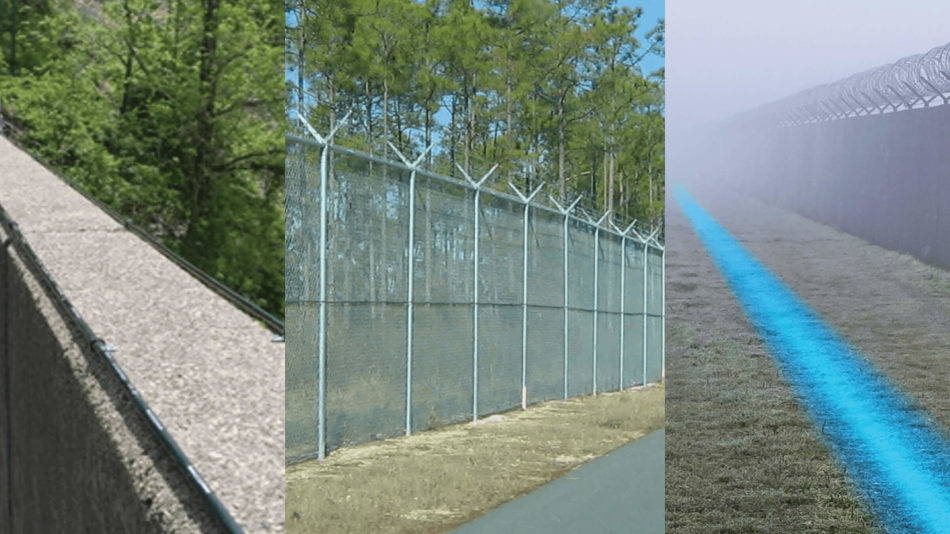How to Integrate a Fiber Optic Security System into Your Current Security Setup for Enhanced Performance
Secure Your Property With Reliable Fiber Optic Safety Solutions
In an age where safety and security risks are increasingly advanced, the need for efficient defense remedies is vital. Fiber optic safety and security systems stand out by supplying remarkable integrity and efficiency, leveraging advanced light transmission modern technology to enhance surveillance capabilities. security fibers. Comprehending the details of fiber optic protection can illuminate the course to safeguarding your property much more efficiently.
Benefits of Fiber Optic Safety And Security
Fiber optic safety services supply an array of benefits that make them significantly crucial in today's electronic landscape. One of one of the most significant advantages is their superior bandwidth ability, which enables for the transmission of huge amounts of data over fars away without considerable signal destruction. This capability is specifically useful for protection systems that count on high-def video clip monitoring and real-time surveillance.
Additionally, fiber optic cords are naturally much more safe and secure than traditional copper electrical wiring. They are immune to electro-magnetic interference, making them less vulnerable to hacking or eavesdropping. This improved protection is vital for protecting delicate data and maintaining the stability of monitoring systems.
Furthermore, fiber optics are more sturdy and resistant to ecological aspects, such as moisture and temperature fluctuations, ensuring lasting reliability and reduced maintenance prices. The light-weight nature of fiber optic cable televisions additionally simplifies setup procedures, enabling higher versatility in system layout.
Exactly How Fiber Optic Equipment Job
In modern protection applications, the procedure of fiber optic systems counts on the principles of light transmission via adaptable glass or plastic fibers. These fibers are created to bring light signals over lengthy distances with minimal loss, making them excellent for sending information associated to safety surveillance. The core of the fiber, bordered by a cladding product, makes sure that light signals stay included within the core through a phenomenon recognized as complete inner reflection.
When incorporated right into security systems, fiber optic cable televisions can send information from different sensors, such as cameras, activity detectors, and alarms, to a main surveillance terminal. The high bandwidth capacity of fiber optics enables the transmission of huge amounts of information concurrently, allowing real-time monitoring and prompt feedback to prospective risks.

Sorts Of Fiber Optic Security Solutions
Various kinds of fiber optic security remedies have continue reading this actually arised to enhance monitoring and protection throughout different environments. One famous remedy is fiber optic perimeter breach detection systems (PIDS), developed to keep track of and secure home limits via the discovery of vibrations and disruptions along fiber optic cables. These systems give real-time signals, allowing timely actions to unauthorized gain access to attempts.
Another efficient option is fiber optic video security. This innovation leverages high-definition cameras linked through fiber optic cables to transmit video information over cross countries without significant loss of high quality. This arrangement is specifically valuable in extensive locations, such as airports and industrial websites, where conventional copper cables may falter.
In addition, fiber optic sensing units are increasingly made use of for environmental tracking, detecting adjustments in temperature level, stress, or acoustic signals that could show security breaches or dangerous conditions. These sensing units provide high level of sensitivity and precision, making them excellent for important facilities security.

Installment and Maintenance Tips
Efficient installment and maintenance of fiber optic safety solutions are crucial for guaranteeing their optimum performance and longevity. Fiber optic cords must be transmitted firmly, staying clear of sharp bends or twists that could endanger their stability.
Throughout setup, it is a good idea to carry out see page complete testing of the system to verify that all parts are operating appropriately. Routine upkeep checks should be scheduled to inspect the fiber optic cables for any kind of indications of wear or damage, along with to make sure that links continue to be safe. Cleaning up the connectors occasionally is likewise vital to stop signal loss due to dust or debris.
Additionally, keeping an upgraded inventory of mounted components and their specs can facilitate much easier troubleshooting and upgrades. By adhering to these setup and maintenance tips, property owners can make the most of the efficiency of their fiber optic safety options, making certain a reputable defense versus possible risks.
Contrasting Costs and Performance
When reviewing fiber optic security options, comprehending the equilibrium in between expenses and efficiency comes to be vital (security fibers). Organizations should think about the in advance financial investment, recurring upkeep expenditures, and the lasting value these systems supply. While fiber optic systems might require a higher initial installment cost compared to traditional copper wiring, their sturdiness and reduced sensitivity to electro-magnetic disturbance typically translate to lower maintenance expenses with time
Efficiency is one more vital aspect; fiber optic safety systems offer boosted data transmission speeds and improved reliability. They can cover larger distances without signal deterioration, making them ideal for large buildings or remote areas. The high data transfer capability sustains sophisticated protection applications, such as high-def video surveillance and real-time surveillance, which are necessary for thorough protection administration.
Ultimately, the choice between expense and effectiveness should be led by details security demands and take the chance of assessments. Organizations must analyze their special demands, thinking about variables like residential property dimension, protection risks, and technical developments. By performing a complete cost-benefit analysis, stakeholders can make informed decisions that straighten with their safety goals while guaranteeing a sound financial investment in fiber optic innovation.
Conclusion
In final thought, fiber optic safety remedies use substantial advantages in terms of performance, reliability, and resistance to ecological disturbances. Eventually, the adoption of fiber optic technology represents a forward-thinking approach to safeguarding homes versus evolving safety risks.